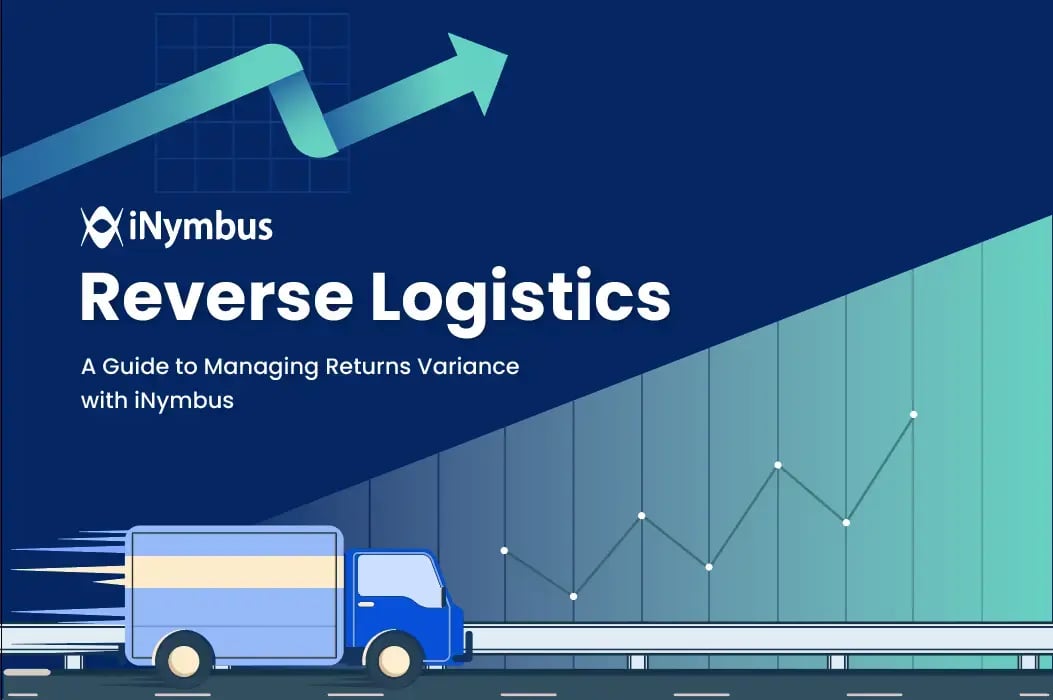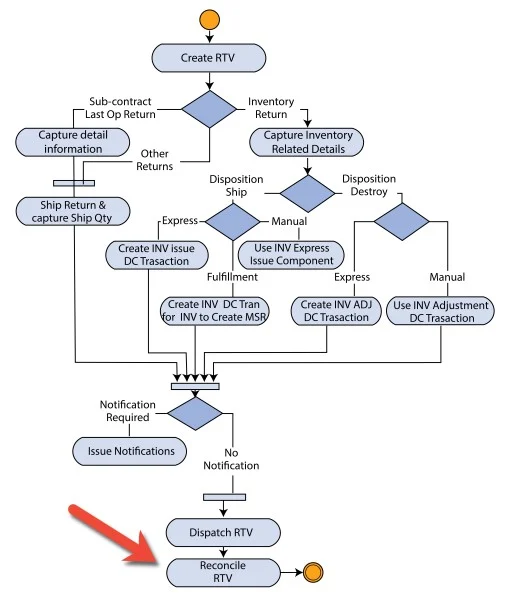
The journey of a product doesn't end when it reaches the customer's doorstep. With the rise of online purchases and shopping, businesses are facing an unprecedented surge in product returns. This is where reverse logistics comes into play.
It involves the process of moving goods from their final destination back to the point of origin. As e-commerce businesses continue to grow, the efficient management of these returns has become a crucial component of the supply chain.
In this blog, we will discuss the process of reverse logistics, challenges associated with the process such as return variance, and solutions to streamline the process.
What is Reverse Logistics?
Reverse logistics refers to the process of moving goods from their final destination back to the retailer or manufacturer for various reasons such as returns, repairs, refurbishment, or recycling.
The process begins when a customer returns a product, whether due to defects, differing expectations, or a change of mind. The returned goods are then collected, often using prepaid return labels, and sent to a central location for sorting and inspection.
At this point, products are either prepared for resale through secondary channels or, if not suitable for resale, processed for recycling. Efficient reverse logistics helps companies reduce waste, improve customer satisfaction, and increase profitability.
The Reverse Logistics Process:

- End Consumer: The process begins with the customer initiating a return. This can occur for various reasons, such as defects or simply a change of mind.
- Returns Reclaimed: Products are collected from consumers, typically through shipping or drop-off at designated locations. Businesses often provide prepaid return labels to streamline this process.
- Returns Collection Center: Returned items are gathered at a central location for processing. Here, they are sorted, inspected, and categorized based on their condition and next steps.
- Distribution to Secondary Outlets: Depending on the condition of the returned products, they may be distributed to secondary outlets, such as clearance centers, outlets, or online marketplaces, for resale.
- Product Recycled: Items that are no longer suitable for resale may enter the recycling stream getting recycled or disposed of. This step involves breaking down products into their component materials for recovery and reuse.
- Resale: Products that have been refurbished or are still in good condition are prepared for resale. This can occur through the company's main sales channels or specialized secondary markets.
- End Consumer (Again): The cycle completes as resold items reach new end consumers, often at a discounted price, thus closing the loop in the reverse logistics process.

Challenges of Reverse Logistics:
Reverse logistics poses significant challenges for retailers, suppliers, and distributors alike. As returns flow back through the supply chain, various issues can arise, complicating the process. One critical issue that often emerges is Return Variance.
Return Variance refers to the discrepancies between what was expected and what is returned. It can create complex problems throughout the logistics process including:
- Missing Items or Parts: Returned items may arrive incomplete or with missing components.
- Incorrect Products: The returned products might not match the original order, leading to discrepancies.
- Pricing Errors: Returns may involve pricing issues, with discrepancies between the return price and the original purchase price.
- Increased Warehouse Costs: Handling and processing returns can drive up warehouse expenses.
- Shipping Costs: Suppliers often incur costs for shipping and handling returned items.
Types of Return Variances:

The Role of Return Variance Analysis:
Return variance analysis plays a crucial role in addressing the challenges of reverse logistics. This process involves:
- Reviewing RTV Documentation: Examining Return to Vendor (RTV) forms for details such as quantities and prices.
- Comparing with RMA Information: Matching RTV data against Return Merchandise Authorization (RMA) forms to identify inconsistencies.
This analysis is crucial for accurately determining the correct return value and ensuring proper financial reconciliation.

Different retailers may have varying processes for returns, such as:
- Single RMA Processing: Retailers like Amazon (Amazon Vendor Returns) manage each RMA individually.
- Periodic Analysis: Some conduct returns variance analysis periodically, reviewing multiple RMAs at once.
- Time-Based Analysis: Returns may also be analyzed over specific time periods to spot trends.
To navigate these challenges effectively, a robust solution is needed to manage the complexities and mitigate potential financial losses.
Real-World Case Study:
Managing return variance is a complex and often overwhelming task, especially for distributors handling a vast number of returns. This case study shows the difficulties faced by a major distributor processing an average of 5,000 returns rates per month, leading to hundreds of thousands of returns annually.
Key Challenges Faced By Distributor:
- High Volume of Returns: The distributor faced 5,000 returns per month, with volumes tripling during the holiday season, overwhelming their processing capacity.
- Complex Communication: Managing interactions with thousands of suppliers, hundreds of retailers, and numerous customers was challenging and time-consuming.
- Razor-Thin Margins: Operating on tight profit margins, the distributor struggled with the financial impact of unreconciled returns variances, resulting in significant losses.
- Prolonged Processing Delays: The sheer volume of returns caused delays that extended processing times to months, further complicating operations.
For more info check our webinar on automated variance analysis for Black Friday/Cyber Monday returns.
How iNymbus Automated Returns Variance Processing:
iNymbus streamlined the complex task of returns processing by implementing a comprehensive robotic process automation (RPA) solution. Through RPA, iNymbus transformed the distributor’s returns management into a more precise, efficient, and scalable operation.
Automated Data Retrieval: The RPA system automatically extracted and consolidated data from multiple ERP systems without requiring manual input. This automation ensured that all relevant information was captured accurately, significantly accelerating processing times and minimizing data discrepancies.
System Validation: The solution included automated cross-checking between internal systems and external platforms, ensuring consistency and accuracy in data. This validation process effectively reduced errors and discrepancies, leading to more reliable outcomes.
Web Portal Reconciliation: iNymbus automated the process of gathering and reconciling line-level details from various retailer web portals. This ensured that each return was precisely matched with corresponding ERP data, significantly reducing the need for manual intervention.
Documentation Uploads: The system also automated the uploading of necessary documentation to retailer portals, streamlining the submission process. This not only saved time but also ensured that documents were submitted correctly and on schedule, reducing the risk of disputes or delays.
Outcomes Achieved By iNymbus:
Optimized Resource Allocation: Automation allowed the company to redirect human resources from repetitive tasks to more strategic roles, optimizing overall resource utilization.
Future Readiness: The automation system’s scalability ensured the company could handle seasonal spikes, like those during Black Friday and Cyber Monday, without sacrificing accuracy or efficiency.
Faster Resolution Times: By automating the returns variance process, the company was able to identify and resolve discrepancies more quickly, improving cash flow and reducing the financial impact of delays.

